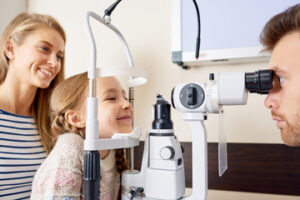Pianos are expensive instruments that require specialized care. Putting them in a garage or other outdoor storage can expose them to extreme temperatures and humidity changes, which can damage their wood and inner workings.

When storing your piano, it’s important to check on it every few months. Make sure it’s still protected from pests and damage, and that it’s in the right climate conditions. Contact Piano Storage Denver for more details.
Pianos are more than just instruments—they’re family heirlooms and works of art. To maintain their sound quality and value, they need to be stored properly. Whether you’re moving your piano to a new location or simply storing it for the winter, it’s important to choose a storage unit with climate-controlled conditions. These units regulate temperature and humidity to safeguard your piano’s wood, felt, and metal components from damage.
Temperature and humidity fluctuations can cause severe damage to a piano’s structure. High humidity levels can make the wooden parts swell, while low moisture can lead to cracking and warping. This can damage the piano’s frame and interior mechanisms, affecting its tonal quality. Inconsistent temperatures can also affect the string tension, making it difficult to keep the piano in tune.
If your piano isn’t stored in a climate-controlled environment, it will likely experience extensive damage over time. Humid environments can cause the strings to rust or lose their tone, while dry environments can leave the wood in the piano’s body susceptible to warping and cracking. This damage can result in the piano being out of tune when it’s retrieved, and it may even need to be repaired or replaced entirely.
With a climate-controlled storage unit, you can rest assured that your piano will be protected against these environmental factors. A good facility will monitor the environment regularly to catch any problems early and ensure that your piano is kept in pristine condition for years to come.
When choosing a storage facility, look for one that offers specialized equipment like padded dollies and ramps to make transporting your piano easier and safer. It should also offer 24/7 security, including cameras and a secure entry system. It’s also important to check whether the storage unit is clean and has a dedicated area for pianos, so they aren’t damaged by other items in the storage space.
Finally, when preparing your piano for storage, it’s important to disassemble as much as possible. This will make the piano more compact and prevent it from being damaged during transport and storage. It’s also a good idea to label all of the screws and small parts so that you can reassemble the piano correctly when needed.
Secure Storage Facility
A piano is a large, valuable instrument that can be damaged easily if not stored properly. Storing a piano in the wrong environment or at the incorrect temperature can cause costly damage to the piano’s finish, wooden components and strings. By using a professional storage facility that offers climate-controlled units for pianos, you can rest assured that your instrument will be protected until you’re ready to move it back into your home.
Climate-Controlled Storage
The wooden components of a piano are highly susceptible to changes in temperature and humidity, leading to warping or swelling. Climate-controlled storage, like that offered by Citywide Moving Systems, ensures a consistent environment for your piano, protecting its overall structure and performance. Humidity can also damage the metal elements of a piano, leading to rust and corrosion.
Secure Storage Facility
The security of your piano is equally as important as the quality of its climate control. A secure storage facility, with a locked door and surveillance cameras, deters potential theft or vandalism and provides peace of mind for your piano’s safety while in storage. Look for a storage facility that uses unique access codes or keycards for entry, which prevents anyone from entering without authorization.
In addition to secure access, a secure storage facility will have a staff on-site to monitor activity and provide support for any issues that might arise. Look for a storage facility in your area that offers a range of different insurance coverage options for your piano, giving you the option to select the plan that best fits your needs.
Proper Positioning
While in storage, make sure that your piano is not positioned directly under windows or vents where drafts might occur. Position your piano away from exterior walls and doors, as well. These factors will help minimize moisture accumulation in locales like Fort Mill and Indian Trail, ensuring that your piano remains protected for the duration of its storage.
It’s also a good idea to cover your piano with breathable fabric while in storage. This will protect your piano from dust and debris, and it’ll prevent moisture from accumulating, which is crucial in areas like Monroe and Ballantyne.
Disassemble Your Piano
Pianos are a delicate instrument, and they require proper care to stay in good condition. Placing a piano in your garage isn’t a good idea, as extreme temperature changes can damage the wood, and humidity fluctuations can cause metal pieces to rust and tuning pins to get stuck.
A climate-controlled storage unit can help prevent these issues by maintaining a consistent temperature and low humidity levels. It’s also important to keep the piano clean and cover it while in storage. This will protect it from dust, dirt, and pests. It’s also a good idea to perform regular inspections during storage so that any problems can be addressed immediately before they worsen.
Before storing your piano, you should disassemble it for safer transport and storage. This will reduce the chance of damage during transit and help you avoid costly repairs in the future. The piano’s action and keyboard should be disassembled, removing the hammers from the keys. You can usually do this by unscrewing a few bolts or screws and releasing the hammers. Place any loose parts in a plastic bag to make sure they don’t get lost. Once the piano is fully disassembled, cover it with a sheet or blanket to keep it clean during storage.
When the piano is ready to be moved back into your home, allow it a week or so to acclimate to its new environment before tuning it. This will give the piano time to adjust to the changing temperatures and humidity levels, which can affect its sound quality.
Once the piano is in its new location, be sure to keep it elevated off the floor using a pallet or risers. It’s also important to keep it away from windows and vents, which can affect the piano’s condition by causing condensation and mold. Finally, don’t stack any boxes or other items on top of the piano, as this can damage it.
If you’re planning to store your piano for a long period of time, consider hiring a professional piano mover and storage service. These experts have the experience and equipment to handle this specialized task, making it easier and safer for you. In addition, a professional can provide advice on how to properly protect your piano for storage and how to transport it safely to and from the storage facility.
Prepare Your Piano Before Storage
Pianos are large and delicate instruments that require special care during storage. They’re highly sensitive to changes in temperature and humidity, which can damage their wooden components and cause rust on felt or metal parts. Without proper storage, these issues may be irreparable and affect the value of the piano. Choosing the right facility, proper wrapping and positioning, and regular inspections are essential to keeping your piano in good condition while it’s in storage.
The best piano storage is climate-controlled, as these units keep the temperature and humidity stable. This prevents the wood from expanding and contracting, which can lead to cracking, warping, or even mold growth. Additionally, these units help to regulate the moisture levels in the air, which helps to protect the felt and metal parts of the piano from damage.
Basements, attics, and non-climate-controlled spaces are not suitable for piano storage, as they can be prone to flooding, extreme temperature fluctuations, and high humidity levels. These environments can ruin a piano by causing it to warp and rot, which can be difficult and expensive to repair.
Once your piano is at the storage unit, it’s important to properly position it. It should be elevated slightly off the floor using pallets or a platform to avoid direct contact with the ground and to allow for air circulation to prevent moisture buildup. It’s also important to leave a gap between the piano and the wall of the storage unit to prevent any bumping or collisions.
Wrap your piano in furniture blankets and secure with straps to provide additional cushioning from potential damage. Be sure to use thick blankets, as thinner ones will not provide the same level of protection. Plastic sheeting can also be used, but be careful not to wrap the piano too tightly, as this can trap moisture inside.
It’s important to have a team of people when moving your piano into storage. Having extra hands will make the process much easier and ensure that your piano is handled with the care it deserves. When storing your piano, remember to regularly inspect it to ensure that there are no problems like pests or water damage that might worsen during the long-term storage period.


